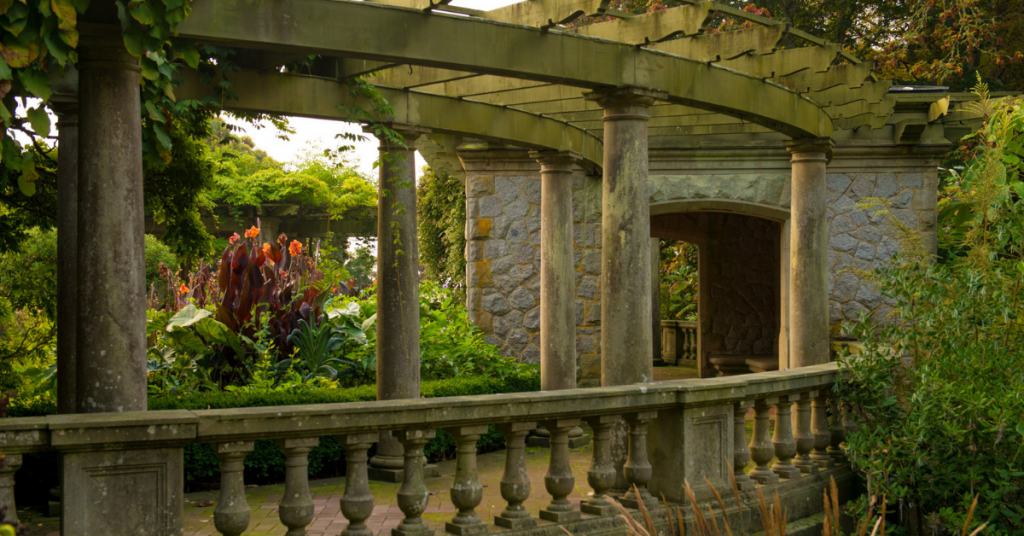Anni’s bench will be a place to remember amongst the flowers


A German woman.
An Italian garden.
A Canadian university.
No, this isn’t the framework for a Netflix romantic comedy.
Rather, it’s the basis of a story about an act of love and remembrance that is also an act of generosity.
The university is Royal Roads, on Vancouver Island.
The garden, located next to RRU’s iconic Hatley Castle, is serene, symmetrical and impeccably groomed, featuring boxwood hedges, wisteria and yuccas that are more than a century old. There are also four statues — one for each of the seasons.
The woman is Anni Rochon, who spent time on the island visiting one of her daughters, Ira Hoffecker and her family.
The Hoffecker family, has made a donation to have a memorial bench in her name placed in the Italian garden as part of A Vision in Bloom, the Royal Roads fundraising campaign launched last year to restore and maintain the university’s historic gardens and related facilities.
“We would like to commemorate our dear mom and grandmother, Anni Rochon, who died on June 1, 2021,” her daughter Ira wrote in explaining the donation.
“Anni was born in 1938 in Hof, Germany just before the beginning of world war two. She spent many days of her childhood in a bunker until their liberation by American soldiers in 1945. Her terrible memories of war made her a peace-loving person.
“Anni loved plants and flowers and was a lifelong supporter of her local botanical garden,” Ira continued. We always had beautiful plants and fresh flowers in our house growing up, and her children share her passion in our lives. My mom and I had travelled a lot together over the years and always made sure to visit botanical gardens and look at people’s gardens.
“She loved to come and visit us here in Victoria. We felt we wanted to have a place where we can go and dedicate time to her. A bench in the Royal Roads garden seems like the perfect place for us to go and sit and remember her. We can admire all the beautiful plants while we think of her.”
The aim is for Rochon’s bench to be placed in the shade of a loggia*, near a covered gallery. From there, visitors can sit and enjoy the quiet of the garden, gaze out at the flowers, the ornate stone balustrades and marble urns from the Edwardian era, when the castle and, subsequently, the Italian garden were built.
They can also set out along the original brick pathways to examine the four statues — a common feature of formal Italian garden, says RRU Archives Manager. Jenny Seeman. Pomona, representing fall, holds autumn fruits; Hebe, winter, holds a case and a pinecone; Flora, spring, has flowers; and Ceres, summer, displays a sheaf of wheat.
Or they can examine, up close, the plantings that date back to before the garden’s completion in 1914, says Jessie Phillips, an RRU gardener for 17 years who’s primarily responsible for the Italian garden. In addition to the boxwood and wisteria, she says, those include yew hedges, peonies and Japanese anemones. Added to those — this year, at least — are lemongrass, cabbage and kale, heucheras and talinum.
Bay laurels and spiky foliage are also part of the picture, says Jeff Wright, supervisor of gardens and grounds at RRU, adding that the Italian garden is a direct takeoff of medicinal gardens some families maintained adjacent to their homes.
With a little shade, a gentle breeze and a clear view of the colourful gardens, Anni Rochon’s bench will provide peace for those who take the time and take a seat.
Join us to restore garden heritage, build food production or celebrate a friend or loved one in your life.
*A loggia is a covered outdoor space with columns and arches defining the view.